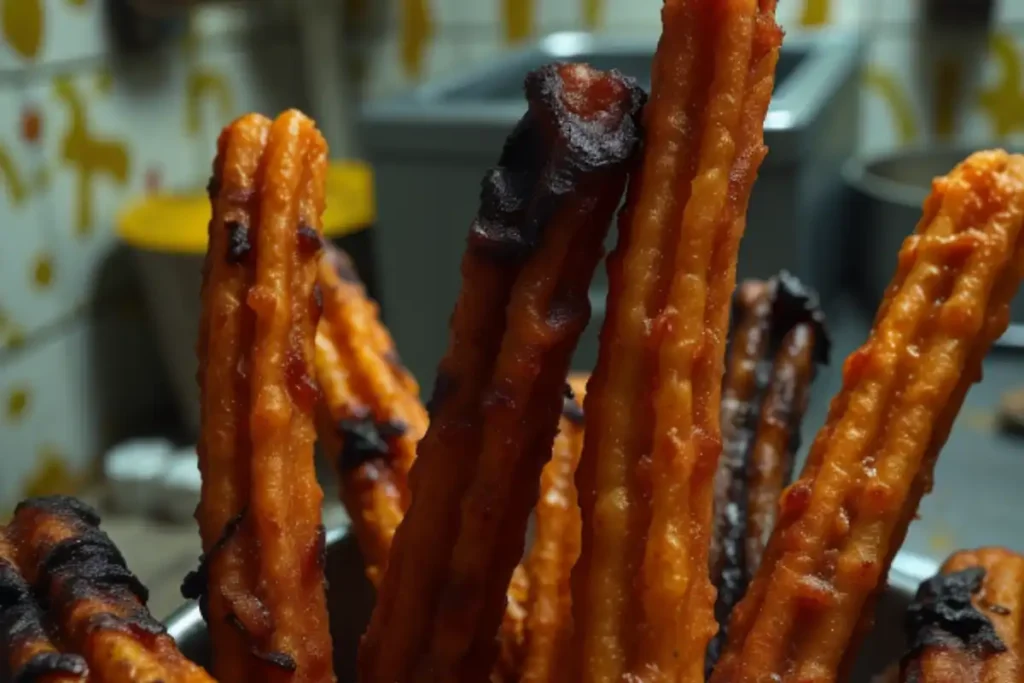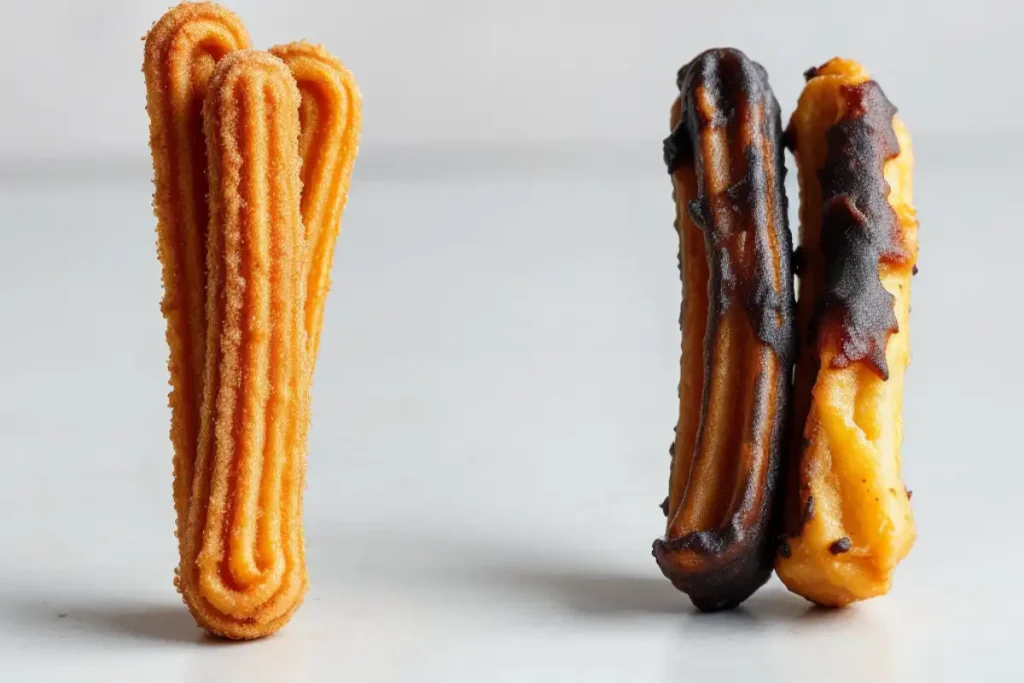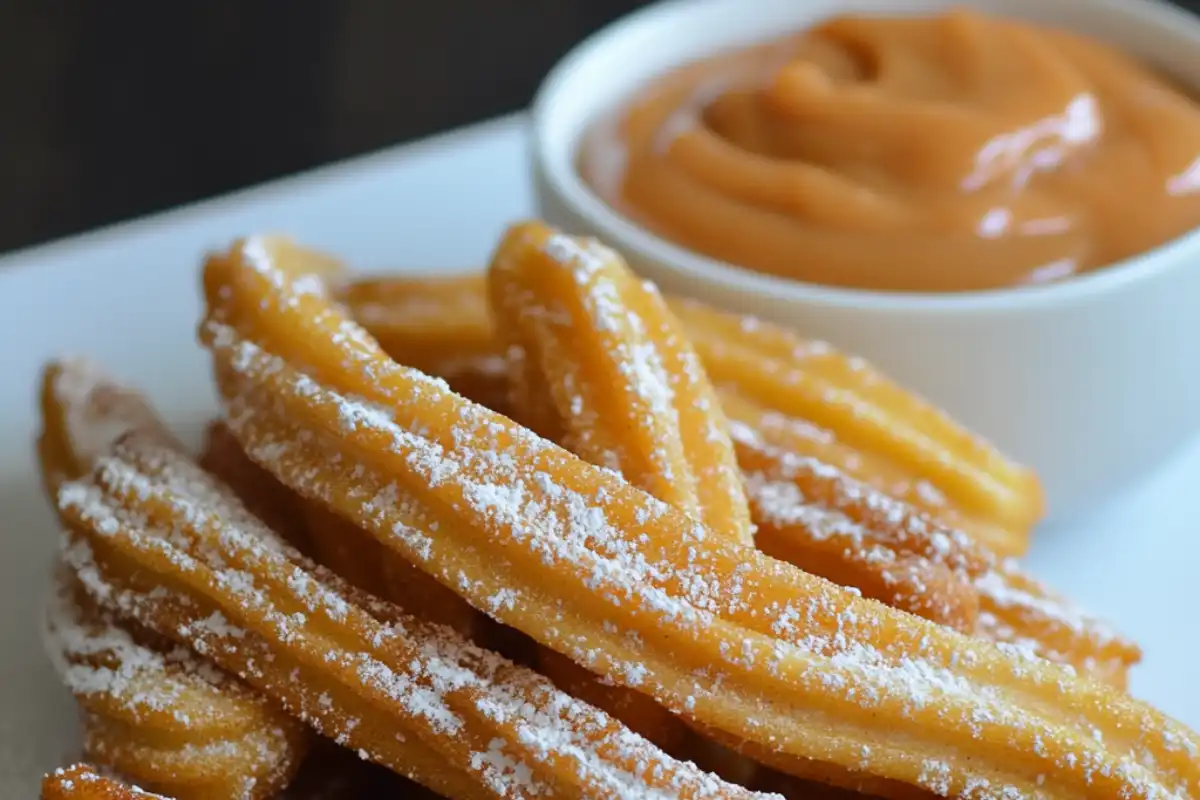Churros are a beloved treat worldwide, known for their crispy exterior, fluffy interior, and irresistible cinnamon-sugar coating. While churros may seem simple to make, there are many pitfalls that can lead to disappointing results. In this comprehensive guide, we will explore what not to do when making churros to help you avoid common mistakes and achieve perfect results every time. By focusing on the details, you can ensure that your homemade churros turn out just as good—if not better—than those from your favorite bakery.
Common Mistakes to Avoid When Making Churros
Making churros at home can be a rewarding experience, but several common mistakes can prevent you from getting that signature crispy outside and soft inside. Let’s dive deep into these mistakes and learn how to avoid them for flawless churros.
1. Using the Wrong Type of Flour
One of the most common mistakes in churro-making is using the wrong type of flour. Traditional churros are known for their crispy texture and chewy bite, which largely depends on the flour you use. While many recipes call for all-purpose flour, some home cooks make the mistake of using bread flour, which results in a tougher texture that lacks the desired lightness.
Using all-purpose flour is recommended for consistent results. It provides the perfect balance of protein and gluten for churro dough. Bread flour, on the other hand, contains higher levels of gluten, leading to a more elastic dough that can be difficult to work with and less enjoyable to eat. Furthermore, it’s important to sift the flour to avoid lumps, ensuring a smooth and even dough consistency. If you’re looking for an authentic churro recipe that highlights the importance of flour choice, check out this easy churro cheesecake recipe for additional guidance.
2. Not Measuring Ingredients Accurately
Precision is crucial in baking and cooking, and this is especially true when making churros. One of the biggest mistakes people make is not measuring ingredients correctly. Whether you’re adding too much water or not enough flour, slight deviations can result in a dough that is too runny or too stiff, both of which lead to poor outcomes.
For example, if the dough has too much water, it will be too loose and difficult to shape, resulting in churros that flatten out when fried. On the other hand, if the dough is too dry due to excessive flour, it becomes difficult to pipe and may lead to uneven cooking. Using a kitchen scale to measure your ingredients ensures accuracy, giving you the best chance for consistent, high-quality churros. Recipes like this churro cheesecake ingredients guide emphasize the importance of precise measurements for successful results.
3. Skipping the Resting Time for the Dough
Many people overlook the importance of letting the churro dough rest before frying. Skipping this crucial step can lead to dense and heavy churros rather than the light and airy texture that defines this treat. Resting the dough allows the gluten to relax, resulting in a dough that is easier to pipe and produces churros with a consistent texture.
Resting the dough for at least 15-20 minutes before frying also helps ensure that the churros hold their shape better when they hit the hot oil. This step can seem insignificant, but it makes a noticeable difference in the final product. Patience during this stage leads to churros that are more visually appealing and satisfying to eat.
4. Frying at the Wrong Temperature
Frying churros at the wrong temperature is one of the most common mistakes and can ruin the final product. If the oil is too cold, the churros will absorb excess oil, resulting in greasy and heavy churros. On the flip side, frying at a temperature that’s too high causes the exterior to brown too quickly while leaving the inside raw.
The ideal frying temperature is around 350°F (175°C). Maintaining a consistent oil temperature is key to achieving it that are crispy on the outside and tender on the inside. It’s essential to use a cooking thermometer to monitor the oil temperature and ensure it remains stable. Dropping too many churros into the oil at once can cause the temperature to drop, leading to uneven cooking. For best results, fry in small batches, giving it enough room to float freely in the oil.
Additionally, it’s important to keep in mind that different oils have varying smoke points. Neutral oils like vegetable oil or canola oil are ideal for frying because they have high smoke points and won’t overpower the delicate flavor of the dough. For those interested in more detailed tips on managing frying temperatures, check out this guide on how to fry churros perfectly.

5. Overcrowding the Pan
Another common mistake when making churros is overcrowding the frying pan. When you add too many churros at once, the oil temperature drops significantly, resulting in soggy, unevenly cooked churros. Overcrowding also increases the risk of the churros sticking together, leading to misshapen pieces that don’t have the classic churro appearance.
To avoid this, it’s crucial to fry only a few churros at a time. Give each churro enough space to cook evenly and achieve that golden-brown color with a crisp exterior. While it may be tempting to rush the process, especially if you’re making a large batch, patience is key. Frying in smaller batches ensures that every churro is cooked to perfection.
If you’re unsure about how to avoid overcrowding, consider using a deep fryer with a basket that can hold just a few churros at a time. This setup makes it easier to maintain the right frying conditions without compromising the quality of your final product.
6. Not Using the Right Piping Tip
The shape and texture are essential to their identity. The ridged surface of churros isn’t just for aesthetics—it actually plays a critical role in how they cook. One of the biggest mistakes is not using a star-shaped piping tip when forming the churros. This ridged shape increases the surface area, which helps the churros cook evenly and become crispier.
Using a smooth piping tip can result in churros that are too dense and lack the crunchy texture that makes them so appealing. Investing in a good-quality piping set with a star-shaped tip is crucial for achieving professional results at home. The ridges also allow the cinnamon-sugar coating to adhere better, enhancing the overall flavor and texture.
When selecting your piping tip, choose one that’s large enough to produce churros that are thick and satisfying but still manageable when it comes to frying. A 1M star tip is a popular choice among home bakers and professionals alike.
7. Incorrect Dough Consistency
Getting the dough consistency right is one of the biggest challenges when making this recipe. Even if you follow a recipe closely, factors like humidity, flour type, and even altitude can affect how your dough turns out. A dough that is too thick will be difficult to pipe, leading to irregularly shaped churros that cook unevenly. On the other hand, a dough that is too thin will result in churros that lose their shape and become greasy when fried.
Signs of the perfect dough include a smooth, slightly sticky texture that holds its shape when piped but is still soft enough to create those signature ridges. If your dough feels too thick, you can add a small amount of warm water, one tablespoon at a time, until the desired consistency is reached. Conversely, if the dough is too thin, gradually add more sifted flour until the consistency improves.
Remember that dough consistency can change as the dough rests. If your kitchen is warm, the dough might become softer as it sits, so you may need to make minor adjustments before frying. It’s always a good idea to do a test churro to check the dough’s behavior in the oil before proceeding with the full batch.

8. Using the Wrong Type of Oil
The type of oil you choose for frying is crucial for achieving perfect churros. While some people may be tempted to use olive oil for its health benefits, it’s not ideal for frying churros. Olive oil has a lower smoke point, which means it can break down quickly and impart a bitter flavor to your churros. Instead, opt for neutral oils with high smoke points, such as vegetable oil, canola oil, or peanut oil.
These oils allow the churros to fry evenly without affecting their taste. Additionally, these oils can be reused for multiple batches if strained and stored properly. Clean oil ensures that your churros don’t have an unpleasant aftertaste or appear greasy.
For more tips on oil selection and maintaining its quality while frying, explore how different oils impact texture and flavor in churro recipes.
9. Ignoring Safety Precautions When Frying
Frying can be dangerous if you don’t take the proper safety precautions, and this is particularly true when making churros. One of the most common hazards is exploding churros, which occurs when steam gets trapped inside the dough. To prevent this, it’s essential to ensure that your dough is smooth and even, with no overly thick sections.
Additionally, never overfill your pan with oil. The oil should only fill about one-third of the pan to leave plenty of space for bubbling and splattering. Always use long-handled tongs to flip the churros and avoid placing your hands too close to the hot oil.
Another key tip is to keep a lid nearby when frying. If the oil starts to smoke or a fire breaks out, you can quickly cover the pan to cut off the oxygen supply. Never use water to extinguish an oil fire—it can make the situation worse. Instead, turn off the heat and use the lid to smother the flames.
By following these safety precautions, you can fry churros with confidence and avoid common accidents.
10. Not Draining the Churros Properly
Even if you fry your churros perfectly, failing to drain them correctly can lead to a greasy, unappetizing texture. Once the churros are golden brown and fully cooked, remove them from the oil and place them on a plate lined with paper towels. This step allows the excess oil to drain away, leaving the churros crispy and ready for their cinnamon-sugar coating.
It’s important to give the churros a minute or two to drain properly before rolling them in sugar. If you coat them too soon, the sugar can clump and turn sticky instead of evenly coating the churros. Using a cooling rack over a baking sheet can also help with drainage, as it allows air to circulate around the churros, keeping them crispier for longer.
FAQs: Frequently Asked Questions
This section addresses some of the most common questions people have about making churros at home:
- Why are my churros raw inside?
This issue typically arises from frying at too high a temperature. When the oil is too hot, the exterior of the churros browns too quickly while the inside remains raw. Ensure that your oil stays at a steady 350°F (175°C) for even cooking. - How can I keep churros crispy for longer?
To maintain crispiness, make sure to fry at the correct temperature and drain the churros properly. You can also keep them warm in an oven set at a low temperature (around 200°F/95°C) until you’re ready to serve them. This helps retain their texture without drying them out. - Can I make churro dough ahead of time?
Yes, you can make the dough ahead and store it in the fridge for up to 24 hours. Just make sure to let the dough come to room temperature before frying for the best results. Some people even prefer making the dough in advance, as it can enhance the flavor and consistency. - What’s the best way to reheat churros?
If you have leftover churros, the best way to reheat them is in an oven at 350°F (175°C) for about 5-7 minutes. This helps bring back some of the crispiness without making them soggy.
Conclusion: Mastering the Art of Making Churros
Perfecting the art of making churros requires attention to detail and avoiding common pitfalls. From selecting the right flour to managing oil temperatures, each step plays a critical role in the final product. By focusing on these tips and addressing potential issues ahead of time, you can consistently produce churros that are crisp on the outside, soft on the inside, and full of flavor.
For more guidance, explore related content like how to make a churro cheesecake or understanding churro filling ingredients. With patience and practice, you’ll soon be able to enjoy perfect homemade churros whenever you like.

